Scotland, Wales and England
9 - 29 October 2008
9 - 29 October 2008
photos by G.P. Jones using Nikon Coolpix 4300 digital
camera, except where noted

This trip began and ended in Manchester. I may never fly into or out of Heathrow again. Manchester is so much more peaceful, organized, clean, &c., &c.
On this trip I became aware that I am developing themes in my travels: buildings (mostly churches and castles), funny signs, and, most recently, visiting locations where movies or TV shows were filmed. See below for examples of all these.

I took a short trip to Hatfield in Derbyshire on my way to Edinburgh, because I wanted to see where the television show "The League of Gentlemen" was filmed. It turns out the show was filmed in Hadfield, not Hatfield (see below for separate trip and pictures), so all I got was this lousy (but funny) street sign.

Actually, I also got this cobweb picture. Taking pictures of cobwebs is not easy. They look great in person, but are hard to see in photographs. Oh, well.

Who knew that Edinburgh would have an outpost of USC (University of Southern California?; not really)

Victorian schools, like this one in Edinburgh, had separate entrances for Girls and Boys, labelled in the very architecture, in stone over the doorways. Usually, they were on opposite sides of the building, as in this case. The Boys entrance is visible on the left.

Here is a closeup of the Boys entrance. No-one there.

Here is the Girls entrance on the other side. Notice the crowd!

This school had the most peculiar sign in the car park (parking lot).
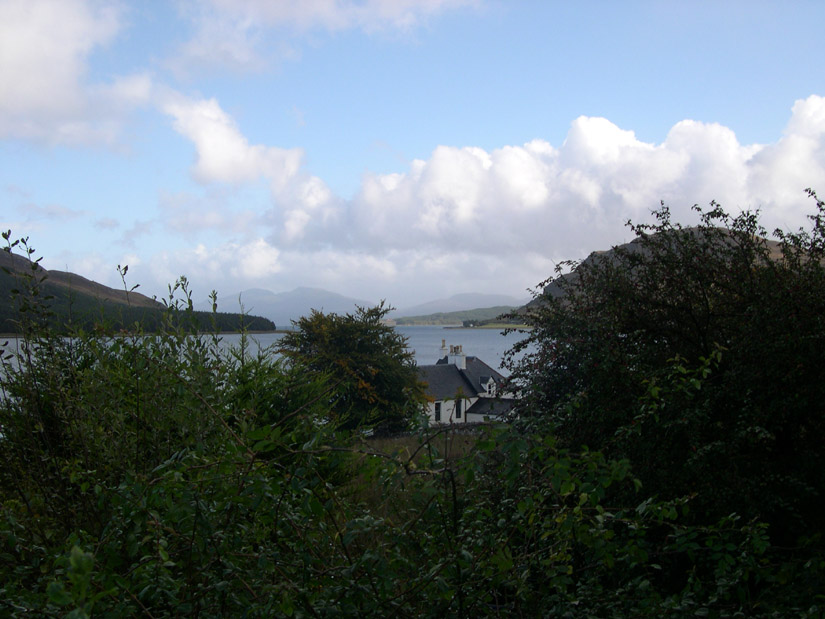
After de-compressing (I almost wrote de-composing!) for two days, I spent two days on the Isle of Skye in a very pleasant B&B. Unfortunately, it was a week-end, so travel around the island was extremely limited (Saturday) or non-existent (Sunday).

View from the "living room" of the B&B, looking South-East.

Skye has several good-sized towns, including Uig, shown here. I don't know how to pronounce it.

Another school, this time in Glasgow.

There's the now-familiar Boys entrance, but there was no Girls entrance that I could find.

There was, however, this bit of Victorian insanity! I have no explanation of what this means.

On opposite sides of Glasgow, on the same day, I found these two very different approaches to religion. The viewer can decide which is best, but there is no question that they are completely different at the core: the Quaker poster (left) leaves it up to you; the fundamentalist Christian one on the right (the first, blue poster), says they leave it up to Christ Jesus.

Take a look at the service offered near the bottom of this sign. Lymph drainage, manual or otherwise, sounds like something to be avoided!

I can't help but think of Mel Brooks' "Blazing Saddles" when I see a Cathedral called "St Mungo's".

Good old Norman MacLeod, a proud Scotsman in a Glasgow park.

Contrary to popular opinion, this is not the source of a disease.

On the way to Doune Castle (see below), one travels through Stirling, a fine city on a steep hill. This building, from the 1920s, is (or was) a Boys Club, and has mottos built into the stonework, to remind the boys what to do. At the left of this facade, it says "Keep Smiling", and over the door are the words "Play the Game".

Here the words are a bit more ominous: "Quarrelling is Taboo".

The Church of the Holy Rude. I swear, the medieval English had a sense of humour!

This is the Church of the Holy Rude, which is closed for the Winter beginning October 1, so I couldn't see the inside. The building, by the way, is massive and dominates the city, second only to Stirling Castle, which is only a bit higher, at the top of the hill.

This was my first view of Doune Castle, on a soggy, rainy, bloody depressing day fit for a mediæval castle. Quite simply, I visited Doune because it was a primary location for the filming of Monty Python and the Holy Grail (1975).

Here is a clip from Monty Python and the Holy Grail where King Arthur and his knights approach the castle.

Here is the same castle today, from roughly the same angle.

And another view of Doune Castle from the front.

Another scene from Monty Python and the Holy Grail, this time in the Castle's courtyard. The people are getting ready for a wedding.

The same courtyard today.

Another view of Doune Castle courtyard, and the stairway into the main building.
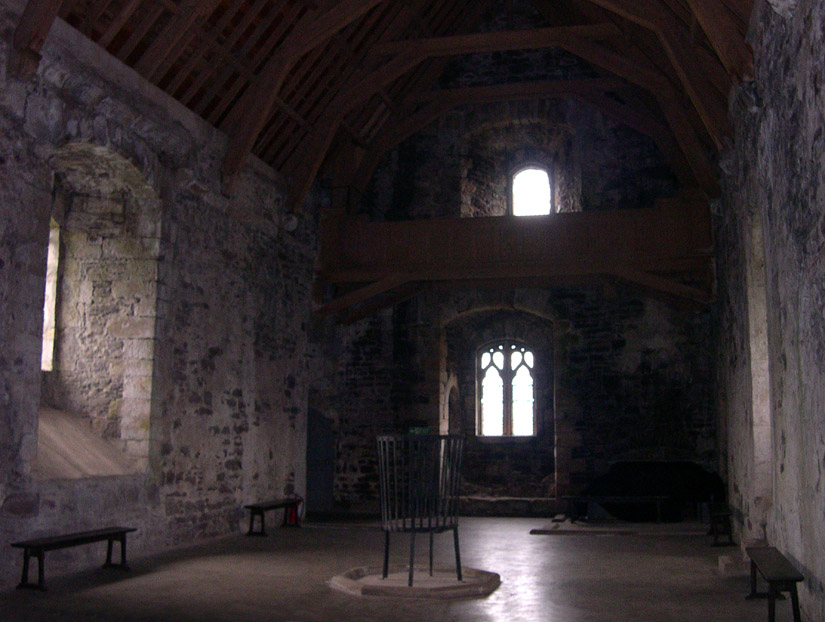
An interior area of Doune Castle.

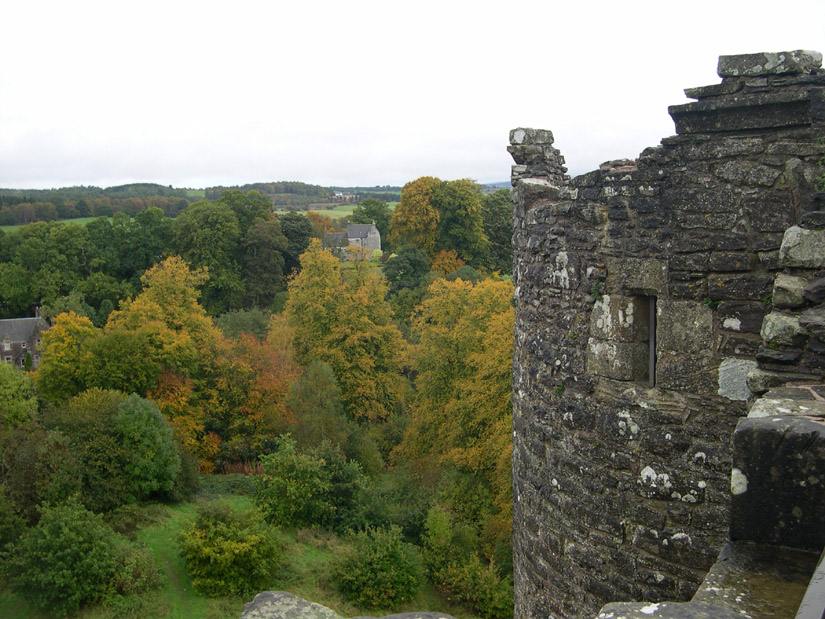
The view from the top of Doune Castle is spectacular, and probably looks the same as when the Castle first went on the market in 1420.
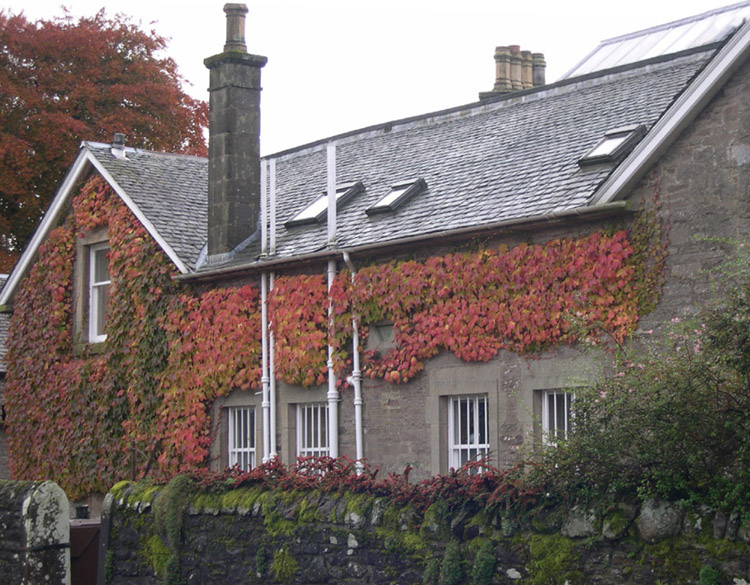
The town of Doune is not nearly so interesting as the Castle, but does have some nice ivy-covered cottages, with the leaves changing for the Autumn.

The tower of Magdalen College is one of the "dreaming spires" of the city, visible from almost anywhere. On the first of May, at dawn, the choir of Magdalen College goes up to the top of the tower and sings a program to welcome the Spring. It's called May Morning. I participated in the festival -- well, I watched it -- on a visit in 2004.

This is Oxford's University Church, in the High Street, next to Brasenose College, which was originally called "Brasen Nose" College.

A view of the University Church from Brasenose College, at sunset.

Some of the architects in Oxford may have been students with a typical sense of humour. Gargoyles like these are everywhere.



The Southern Wales city of Swansea has an interesting Castle ruin, right in the centre of the town, near a plaza with a fountain.


I've been to Shrewsbury, in Shropshire, many times, but usually just as a stop on the way to my friend's house in Eastern Wales just across the border. This time I stayed two days and explored the town. This is Shrewsbury Abbey, a 900-year-old Norman building, as you can see from the stout columns here inside the church.

In the center of Shrewsbury, St Mary's church has some remarkable stained glass. This shows the East Window over the altar, and also the additional window in the chapel area to the right of it (which almost looks like a reflection in a mirror but isn't).

Here we have the sad tale of Cadman. Here's my "take" on what happened that fateful day. Cadman had a few too many, said he could fly from the church tower across the river, and, well, couldn't. Sort of an 18th Century party boy. R.I.P.

St Chad's church, on the Southern edge of the old town of Shrewsbury, is a strange looking building, not liked by everyone when it was new in the late 1700s. It is remarkable, however, in that it is round (as you can see), and is unusually nice inside. The church sits at the top of a large park which slopes down toward the river. The park is called "The Quarry", since that's what it once was.

Sometimes it's obvious what an altered (defaced?) sign is meant to say. This time, I'm not sure. Was it intentionally modified? Did letters just drop off?

I can't really comment on this without offending people.

Several businesses in England are almost the same as ours. You've heard of T.J. Maxx . . .

and Pizza Hut?

And then there are business names that you would probably never see here in America, this one in the Strand in London.

This looks like the kind of sign that might be left over from Dickens' time.

I have absolutely no idea what "articulated buses" might be.

This building apparently is officially named 30 St Mary Axe, and is unofficially referred to as "The Gherkin"

Unknown building in Queen Victoria Street, near St Paul's Cathedral.

Unlike the schools shown above (Edinburgh and Glasgow), this one in a down-scale London neighborhood is no longer a school, but the original sign remains.

"Little Britain" is a very popular television program from the last six or seven years, currently being produced here in an incarnation called "Little Britain USA". Strangely enough, there is also a street in London called Little Britain, as this sign shows.

Lincolns Inn is a massive complex of buildings in London where lawyers work. Like all such centers (e.g., The Temple in the Strand further south), it has its own church, in this case called a Chapel. Don't let that name fool you -- it's larger than most churches in Los Angeles. The Lincoln's Inn Chapel is remarkable, at least to me, in that the entire building is mounted on these pillars and fan vaulting, called an "undercroft", so you can walk under the Chapel! In the pavement seen here are grave markers (and, of course, under those, the graves!) of patrons of Lincoln's Inn.

St Mary Aldermary, in the City of London near St Paul's Cathedral, is remarkable and strange. If you look at the window and the East Wall, you can see that it is not square with the rest of the church. The reredos (carved wooden backdrop for the altar) is square with the roof and side walls, but the back wall and the ceiling panels slope away slightly to the left! I asked about this. It seems that the original mediaeval church burned, like most everything else in the City, in the great fire of 1666, and when they went to rebuild it, they followed the ancient wall, as it would have been too costly to build a new foundation. Apparently, medieval church architects weren't as concerned about rectangular, symmetrical buildings as they have been in later times. The overall effect of this anomaly, at least for me, is that it just seems wrong, like a mistake that still needs to be corrected.
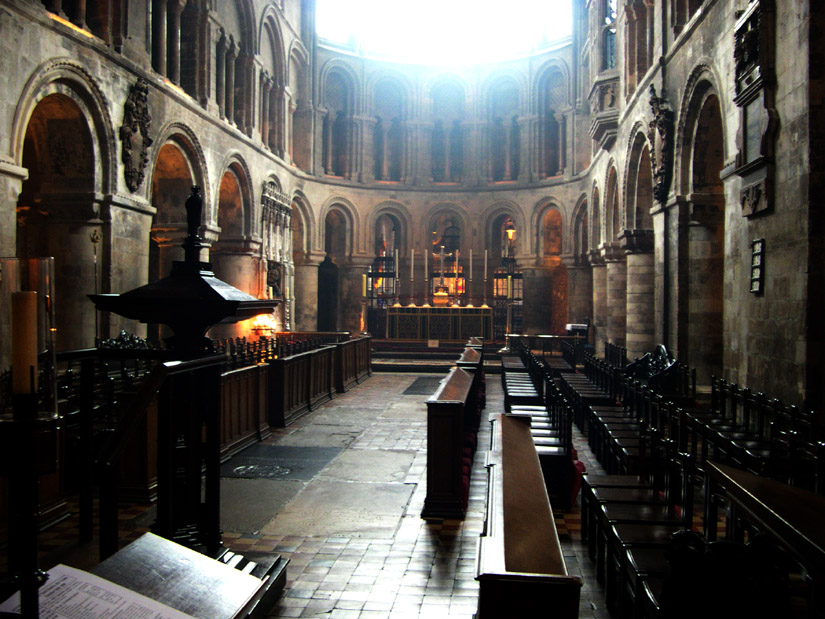
One of the huge surprises of this trip was when I walked into the church of St Bartholomew the Great. (Yes, in case you're wondering, there is also a St Bartholomew the Less, not more than 300 yards away, inside St Bartholomew's Hospital.) Not knowing what to expect, all of a sudden I was transported back a thousand years when the building was a "new" priory located in a field outside the City. The Norman columns (reminiscent of those in Shrewsbury Abbey and the Chapel of St John the Evangelist, which I visited earlier this year, inside the Tower of London) are still very much a part of the "room", and the whole place, while very well maintained, just looks old, and feels extremely peaceful and quiet.

The reason I made this trip at all, having just been in England in June and July, was to attend a concert of Carl Orff's Carmina Burana in the Royal Albert Hall. It was everything I expected it to be.


Finally, I made it to Hadfield (not Hatfield, as noted above), where the TV show "The League of Gentlemen" was filmed. These two clips from the show are from the title sequence.

This is the statue seen in the first clip above . . .

. . .and here is the same street seen in the above clips, as it is today.



It wasn't until late December, while viewing the League of Gentlemen Christmas Special (released in 2000) that I discovered a scene filmed at a location already familiar to me -- and already presented above -- the Church of St Bartholomew the Great.
Here are three views of one of the scenes.

Here's a replay, so to speak, of my picture of St Bart's interior.
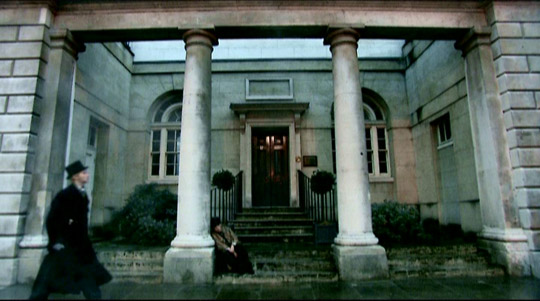
In the same League of Gentlemen special, this view of the NorthWest wall of St Bartholomew's Hospital served as the entrance to an evil doctor's mansion.

This is a more conventional view of the same entrance.

This sign at a University in Manchester seems a bit harsh, don't you think?

Didn't try it; didn't have a car.

I can't resist taking pictures of businesses that I might own.

How about lunch at the Slug and Lettuce? No? Why not?

PANORAMA picture -- scroll to the right to see entire frame.
There is no way to convey in a photograph the immensity of this cemetery, and how crowded it is. I've seen such subterranean sprawl in New York and elsewhere, but this is much bigger and denser than anything I've ever seen before.